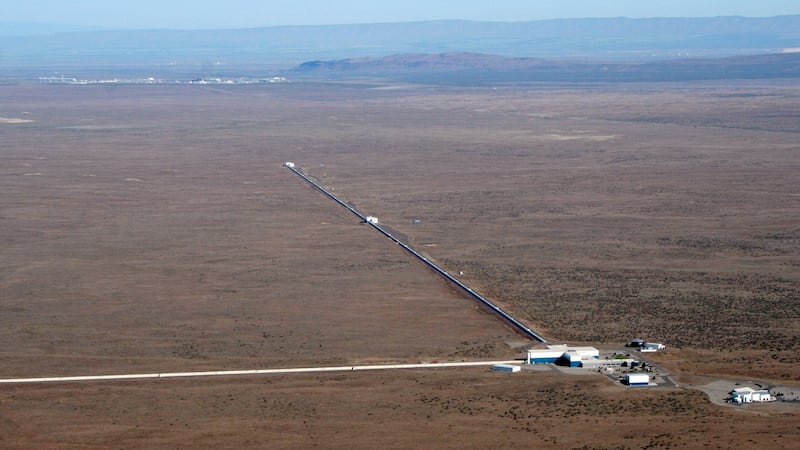An international team of scientists looks set to make waves on Thursday by announcing the first direct detection of gravitational waves rolling across the universe.
If they do announce the findings at a press conference in Washington DC - and this is by no means certain - it will represent one of the most momentous scientific discoveries for years.
If the scientists confirm the discovery, it will mean an almost certain Nobel Prize in physics for the team involved.

The press conference was called by an international research collaboration called LIGO. Its aim is to use a laser-based detector that can read tiny changes that take place if a gravitational wave passes over us.
It is easy to describe these waves, but more difficult to help people understand the significance of the discovery.
Tossing a pebble
Imagine tossing a pebble into a pond, with the impact setting off waves that roll out across the water.
Bring this scale up to something much bigger, for example a collision between two massive black holes, two heavy neutron stars slamming together, or a supernova exploding star.
So much gravity is involved that waves spread out in all directions, just like on a pond. Instead of manifesting in water, however, the gravitational waves are propagated by distorting spacetime.
The waves stretch and compress space and time as they rush along at the speed of light. Like a ripple on a pond, they gradually lose energy and weaken.
There are two LIGO detectors, one in Washington state and another in Louisiana, about 3,000km apart.
That way if one detector sees something, there is a delay of about one hundredth of a second before the wave reaches the other.
Each arm of the L-shaped detectors measures about 4km. Lasers fire beams of light along these arms. If a wave passes, spacetime will distort and the beam in one arm will get shorter than the other by an unimaginable amount - about a billionth the diameter of a hydrogen atom.
No wonder then that the LIGO consortium - which involves 900 scientists in 83 institutions in 15 countries - has had some difficulty in spotting these waves.
No waves were detected from the start-up in 2002, up to 2010.
A five-year €564 million overhaul has increased sensitivity fourfold, however, and Advanced LIGO began operations again last October.
Proof of gravitational waves would open up new ways for astronomers and astrophysicists to study the universe.
Rumours began circulating over social media several weeks ago suggesting LIGO had caught a wave.
The LIGO consortium has remained tight-lipped, but will reveal its findings on Thursday at 3.30pm Irish time.










